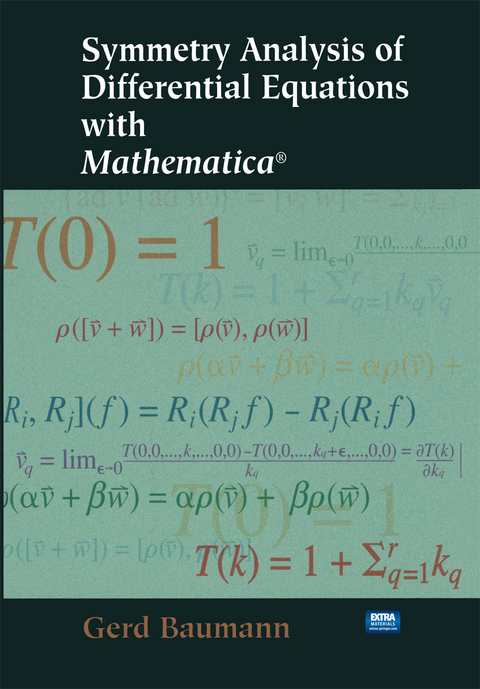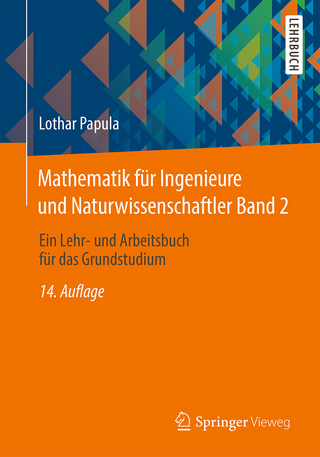
Symmetry Analysis of Differential Equations with Mathematica®
Springer-Verlag New York Inc.
978-1-4612-7418-6 (ISBN)
The purpose of this book is to provide the reader with a comprehensive introduction to the applications of symmetry analysis to ordinary and partial differential equations. The theoretical background of physics is illustrated by modem methods of computer algebra. The presentation of the material in the book is based on Mathematica 3.0 note books. The entire printed version of this book is available on the accompanying CD. The text is presented in such a way that the reader can interact with the calculations and experiment with the models and methods. Also contained on the CD is a package called MathLie-in honor of Sophus Lie---carrying out the calculations automatically. The application of symmetry analysis to problems from physics, mathematics, and en gineering is demonstrated by many examples. The study of symmetries of differential equations is an old subject. Thanks to Sophus Lie we today have available to us important information on the behavior of differential equations. Symmetries can be used to find exact solutions. Symmetries can be applied to verify and to develop numerical schemes. They can provide conservation laws for differential equations. The theory presented here is based on Lie, containing improve ments and generalizations made by later mathematicians who rediscovered and used Lie's work. The presentation of Lie's theory in connection with Mathematica is novel and vitalizes an old theory. The extensive symbolic calculations necessary under Lie's theory are supported by MathLie, a package written in Mathematica.
Introduction.- Elements of Symmetry Analysis.- Derivatives.- Symmetries of Ordinary Differential Equations.- Point Symmetries of Partial Differential Equations.- Non-Classical Symmetries of Partial Differential Equations.- Potential Symmetries of Partial Differential Equations.- Approximate Symmetries of Partial Differential Equations.- Generalized Symmetries of Partial Differential Equations.- Solution of Coupled Linear Partial Differential Equations.- Appendix.- Index.
“The book is essentially an extensive user manual for the Mathematica program … . The book concentrates very much on computational aspects and should be useful for engineers and scientists who want to learn fast the basic computational recipes for a symmetry analysis. … The strength of the book are the close integration of computer algebra and the large number of examples often stemming from real applications.” (Werner M.Seiler, zbMATH 0946.35002, 2021)
| Zusatzinfo | 56 Illustrations, black and white; XII, 521 p. 56 illus. |
|---|---|
| Verlagsort | New York, NY |
| Sprache | englisch |
| Maße | 170 x 244 mm |
| Themenwelt | Mathematik / Informatik ► Mathematik ► Algebra |
| Mathematik / Informatik ► Mathematik ► Analysis | |
| Mathematik / Informatik ► Mathematik ► Angewandte Mathematik | |
| Naturwissenschaften ► Physik / Astronomie | |
| Schlagworte | Algebra |
| ISBN-10 | 1-4612-7418-4 / 1461274184 |
| ISBN-13 | 978-1-4612-7418-6 / 9781461274186 |
| Zustand | Neuware |
| Haben Sie eine Frage zum Produkt? |
aus dem Bereich


